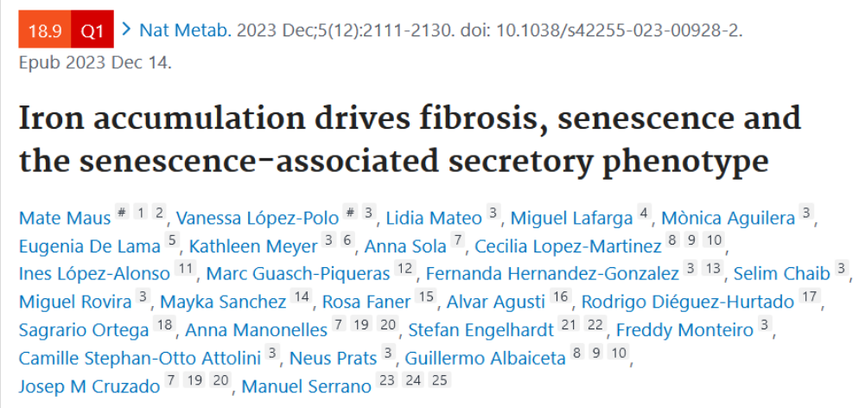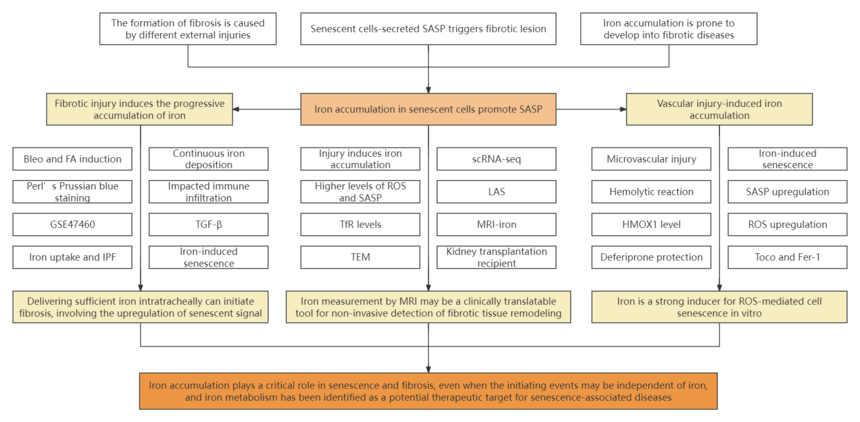Please click the button below to go to our email login page
|
“Iron accumulation + fibrosis + cell senescence”, a blockbuster, is an extremely excellent research thought published in a sub-journal of Nature, obtaining IF of 18.9 beyond doubt“Iron metabolism” and “senescence” are two hot topics never going out of fashion. Today, we will dissect a paper focusing on the relation between iron accumulation and fibrosis-related diseases. So what are the specific project design ideas? Join us and explore together!
Next, we are going to share a paper published on Nature Metabolism, with an IF of 18.9, entitled Iron accumulation drives fibrosis, senescence and the senescence-associated secretory phenotype.
1. Research background (1) Neutrophils and macrophages induce inflammatory responses, and secret matrix metalloproteinase and fibrotic cytokines for matrix remodeling. (2) The formation of fibrosis can result from various external injuries, such as toxins and infections. (3) Secretome of senescent cells, known as “senescence-associated secretory phenotype (SASP)” is the main driver of fibrotic diseases. (4) Hereditary and acquired hemochromatosis can easily develop into fibrotic diseases. Moreover, there is also the onset of iron accumulation in in-vitro senescent cells.
2. Technical route
3. Research results (1) Fibrotic injury induces the progressive accumulation of iron. (2) Iron accumulation promotes fibrosis formation and senescence. (3) Vascular injuries induce iron accumulation. (4) Iron and lysed erythrocytes cause cellular senescence in vitro. (5) Iron accumulation in senescent cells drives SASP. (6) Single-cell dynamics of iron accumulation in lung fibrosis. (7) Iron detected by MRI as a biomarker of kidney fibrosis.
4. Research conclusion The research indicated that vascular and hemolytic injury can effectively induce iron accumulation, while iron accumulation in turn causes senescence and promotes fibrosis. Besides, it has been proved that senescent cells continuously accumulate irons, even if the surge of iron in vitro is weakened. In fact, under the normal circumstances of iron in vitro, exposure to difference kinds of senescence-mediated injured cells can result in excessive ferritin binding to iron, mainly in lysosomes, exhibiting high levels of unstable iron, which promotes the production of ROS and SASP. Then, the research confirmed that iron measurement by MRI may achieve a non-invasive detection of fibrotic load in kidneys of mice and renal fibrotic patients. The ultimate findings revealed iron accumulation plays a central role in senescence and fibrosis even if the initiating events are not related to iron and iron metabolism is a promising therapeut ictarget for senescence-related diseases. |


